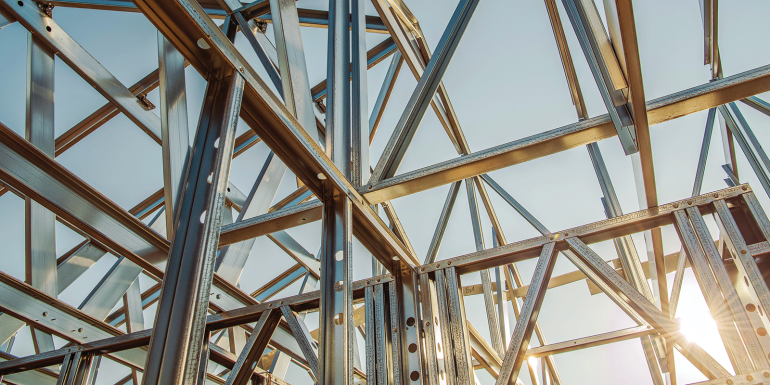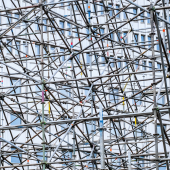Roofs containing incorrect PV panels led to fire

Collaborative reporting for safer structures. Report 1032, Fire in roofs containing PV panels – and lessons from past incidents
One of the triggers for this report was a fire in a building under construction which was circulated in local media (bit.ly/Dartford_fire). The reporter is alarmed by the fact that building-integrated photovoltaic (BIPV) panels were present in the building, rather than building-attached photovoltaics (BAPV). The main distinction is that BAPVs are fitted on existing surfaces that comprise the structure (like flat or tiled roofs), whereas BIPVs essentially replace construction elements and the panel becomes part of the building (potentially façade or roof element). It is still uncertain whether the PVs were the cause of the fire.
The reporter considers that experience with BAVPs is more extensive, so they are tried and tested, but is alarmed by the drive for more beautiful buildings through the avoidance of intrusive elements, which leads to the preference of BIPVs in new projects. Some building control bodies may require details for the PV installation through the submission process, but it is the reporter’s view that their interest is focused on the appearance of the building, potentially leaving safety implication concerns on new technologies unaddressed. It alarms the reporter that in a Fire Officer’s Report on an educational occupancy project, which appears to incorporate BIPVs, that “matters of combustibility of materials is not a planning consideration and would be dealt with via building regulations”.
Part B of Schedule 1 of the Building Regulations 2010 outlines the functional requirements for buildings. It is up to the designers to prove that the functional requirements have been satisfied with appropriate arrangements for the project’s nature and constraints.
When PV panels were increasing in practice, a government study was issued and was conducted by the Building Research Establishment (BRE), producing several reports. The reporter is wondering whether the updating of the databases on PV fires is still ongoing and if potential issues with this new construction practice are addressed through the mechanisms that arose through that study.
Comments
PV panel installation is one of the ongoing issues relating to new developments in construction and building technology, potentially presenting different fire risks to more conventional methods. Fire engineers should not try to prevent the use of new technology but should be cautious about it and treat it with care.
In this case, the location of the PV units would significantly affect the fire risk. Conventionally, PV units tend to be on roofs, which means that even if a fire does occur it is unlikely to present a risk to occupants. However, if the new types of PV are in different locations or incorporated into the building fabric in a novel way, then those risks should be carefully assessed. For example, PVs on top of a tiled roof will at least offer some level of protection to the roof structure, whereas when they are integrated there may be a greater risk (such as concealed fire spread) if there is a fire and the issue is left unaddressed. The interactions of these systems with other traditional or innovative construction methods and products should be explored by designers in order to ensure that they are understood and addressed.
Conventional design standards, by definition, will only address conventional building technology and so it cannot be assumed that compliance with those conventional design standards is sufficient to meet the functional requirements of the building regulations when dealing with new technology or materials. Those responsible (designers and/or regulators) need to demonstrate how they meet the functional requirements of the Building Regulations (as amended), and how those responsible under the Regulatory Reform (Fire Safety) Order 2005 (FSO) assess the risks posed by these new technologies, given these evolving technologies are not considered in statutory guidance in support of the above law.
Regarding the reporter’s comment on the focus on aesthetics instead of safety, the panel would like to clarify that building control is focused on and interested in the safety aspects of designs, and it could be the local authority planning agency that addresses the appearance of the building, to avoid any misinterpretation of the reporter’s view.
The panel acknowledges and supports the need for sustainable growth and greener energy solutions, and this report is another good example of how their introduction to the built environment can require additional considerations by the designers. However, pursuing the green agenda cannot be at the expense of safety for all, and the potential for creating a future legacy issue must be acknowledged at an early stage.
The Fire and Rescue Service (FRS) is updating its procedures as these new risks emerge. This process takes time, with lessons learnt from incidents being used to inform future practice. Despite that, it needs to be acknowledged that FRS intervention has some limitations, and if after having carried out appropriate risk assessments the FRS decides to tackle the fire defensively, this may mean the fire is allowed to burn (under control) while adjacent risks are protected.
Key learning outcomes
For building designers, persons procuring solar panels and fire safety engineers:
- novel technological solutions can introduce new risks to buildings and these have to be properly accounted for in the fire strategy of the building
- those responsible need to demonstrate, with supporting evidence, how they meet the functional requirements of the Building Regulations.
For site engineers:
- ensure the electrical components and connections are properly installed and inspected.
For fire and rescue service:
- consider updating your standard operating procedure to account for any developments in the field
- conventional approaches for fire suppression might not be appropriate for structures with PV panel installations.
The BRE research did include some recommendations for assisting the fire brigade – for example, ensuring good locations for isolation switches – and engineers should take that into account. A review of the latest guidance and safety practices for firefighters can also be read.
In 2016, CROSS published Alert: PV installations: structural aspects, which provides advice about the installation of panels on roof structures.
BRE reports on solar panels bit.ly/gov_PV_incidents
CROSS alert: PV installations: structural aspects bit.ly/CROSS_PV_structural_safety
Guidance and safety practices for firefighters bit.ly/PV_firefighter_safety
To subscribe to the CROSS UK newsletter
(structural and fire safety concerns), visit cross-safety.org/uk/user/register








